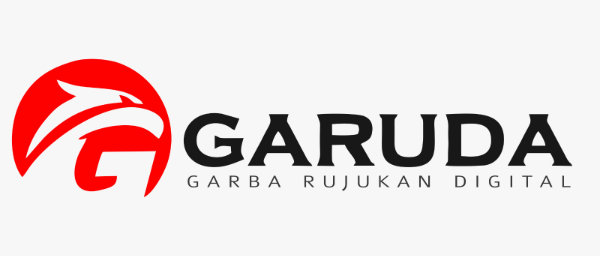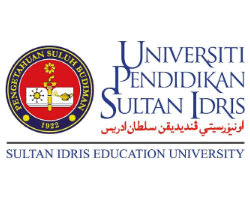Learn Idioms Using Augmented Reality
Abstract
English language is international language that are worldwide use and also one of the important language in communication and a main-medium of instruction in education in Malaysia. In order to become good in English we must learn since we were kids like since preschool and primary school and that show how important to learn English language. Then it need to help the students especially the pre-school and the primary school students to learn English in more effective and attractive ways so that they will not feel boring or lost interest in learning English language. Aim of this research is to find an interactive tool that can be used in learning an English idioms. This research use RAD Model to develop AR application and quantitative methods through questionnaires were implemented to evaluate the research that were developed. The research was evaluated by 10 teachers who teach English Language and evaluated based on usefulness, satisfaction and ease of use questionnaires.
Downloads
References
N. H. Misbah, M. Mohamad, M. M. Yunus, and A. Ya’acob, “Identifying the Factors Contributing to Students’ Difficulties in the English Language Learning,” Creative Education, vol. 8, no. 13, pp. 1999-2008, January 2017.
H. Mohd, “English language and the language of development: A Malaysian perspective,” Jurnal Kemanusiaan, 2004.
H. Halim, W. A. N. Wan Idris, H. Hassan, and I. Y. Panessai, “Learning Logic Gate through 7-Gates,” ijmari, vol. 2, no. 1, pp. 1-10, Mar. 2020.
M. A. Ishak, M. R. Kosnan, and N. F. Zakaria, “Build IoT through Virtual Reality”, ijmari, vol. 2, no. 1, pp. 11-25, Mar. 2020.
W. A. N. Wan Idris, H. Halim, H. Hassan, and I. Y. Panessai, “GENIUS KIDS: Learn to Count through Games,” International Journal of Multimedia and Recent Innovation, vol. 1, no. 1, pp. 1-17, Mar. 2020.
Z. Zakaria, H. Hassan, H. Halim, W. A. N. Wan Idris, M. A. Zawawi, and N. F. Mansor, “Learning Mathematics: One Minute,” International Journal of Multimedia and Recent Innovation, vol. 2, no. 2, pp. 76-86, Sep. 2020.
S. F. Sezali, A. M. Radzuan, N. I. Mohd Shabudin, and R. A. Afendi, “POCKET MALAYSIA: Learning about States in Malaysia Using Augmented Reality”, International Journal of Multimedia and Recent Innovation, vol. 2, no. 1, pp. 45-59, Mar. 2020.
N. K. M. Douglas, M. Scholz, M. A. Myers, S. M. Rae, A. Elmansouri, S.Hall, and S. Border, “Reviewing the Role of Instagram in Education: Can a Photo Sharing Application Deliver Benefits to Medical and Dental Anatomy Education?” Medical Science Educator, vol. 29, pp. 1117–1128, 2019.
AEDT - the Conversation, "How to use Snapchat in the laboratory for better student engagement," November 20, 2018. [Online]. Available: https:// theconversation.com/how-to-use-snapchat-in-the-laboratory-for-better-student-engagement-105146. [Accessed: Sept. 2020].
P. Chen, X. Liu, W. Cheng, and R. Huang, “A review of using Augmented Reality in Education from 2011 to 2016,” Innovations in Smart Learning, Lecture Notes in Educational Technology, 2016.
N. H. Rahani, A. A. Bilong, M. R. Mat Suruji, and I. Y. Panessai, “Learning Logic Gates Using Augmented Reality”, International Journal of Multimedia and Recent Innovation, vol. 2, no. 1, pp. 26-44, Mar. 2020.
Z. Zainal Abidin and M. A. Abdullah Zawawi, “OOP-AR: Learn Object Oriented Programming Using Augmented Reality”, International Journal of Multimedia and Recent Innovation, vol. 2, no. 1, pp. 60-75, Mar. 2020.
S. N. S. Abu Samah, “The Efficacy of Augmented Reality on Student Achievement and Perception among Teluk Intan Community College Student in Learning 3D Animation”, International Journal of Multimedia and Recent Innovation, vol. 2, no. 2, pp. 87-95, Sep. 2020.
N. Norhalim and A. Ismail, “An Early Development Process of an Augmented Reality-Based Healthy Diet Tool Prototype”, International Journal of Multimedia and Recent Innovation, vol. 2, no. 2, pp. 96-101, Sep. 2020.
G. Giraldi, R. L. S. Silva, P. S. Rodrigues, J. M. P. Júnior, and G. Cunha, “Augmented Reality for Engineering Applications: Dynamic Fusion of DataSets and Real World,” in ISEMC - International Symposium on Electromagnetic Compatibility, 2005.
P. B. Davies, C. Carne, H. Mackay, and D. Tudhope, “Rapid application development (RAD): An empirical review, European Journal of Information Systems, vol. 8, no. 3, September 1999.


















